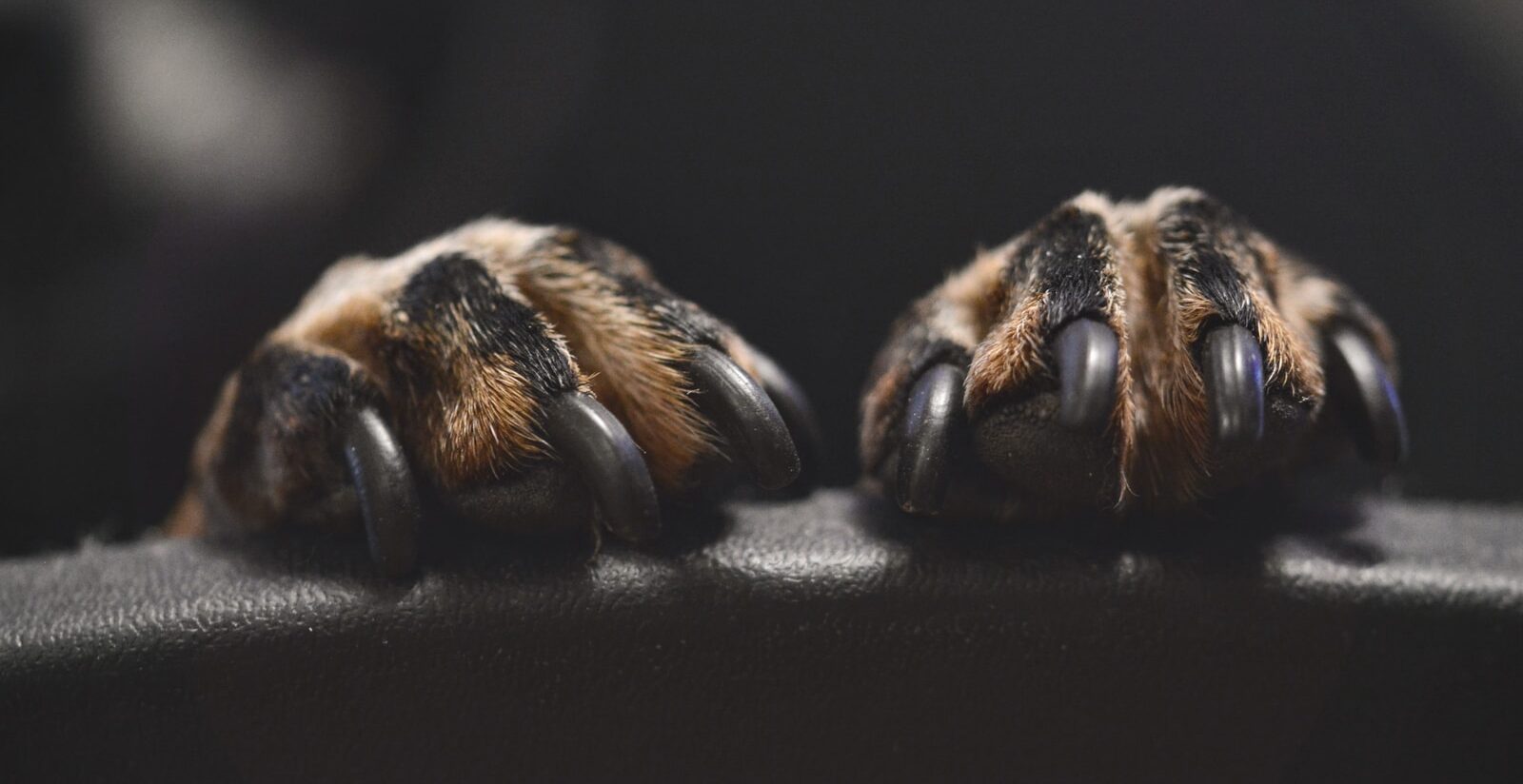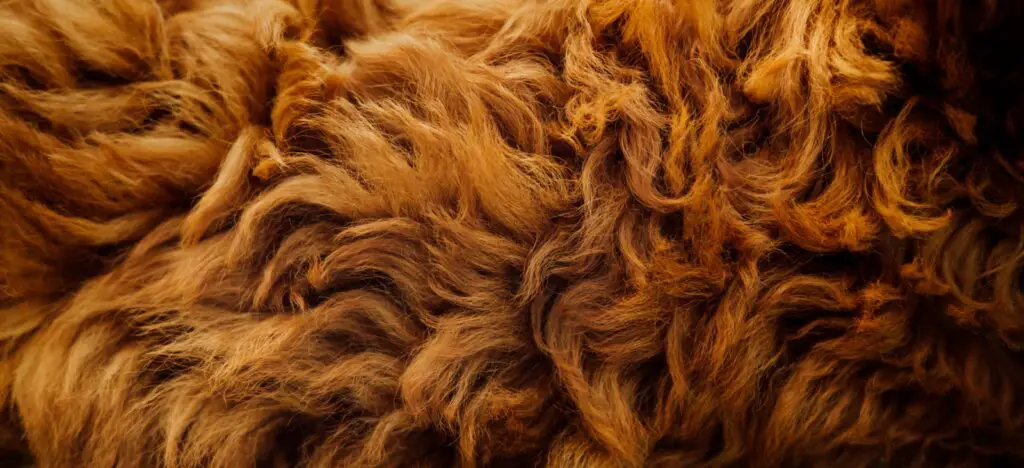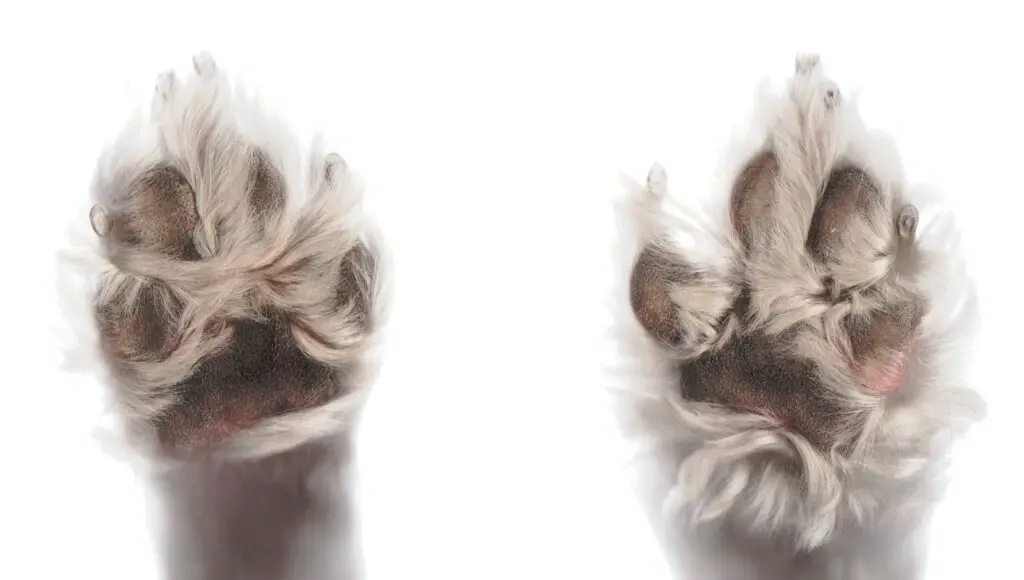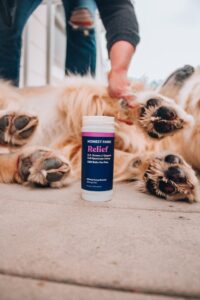
Key points
- Hyperkeratosis is a condition that causes excessive growth of keratin on your dog’s paws, nose, or ears. Usually, this condition doesn’t pose any danger to your dog, but it can cause discomfort and pain. Your pet may even develop an infection if the skin in the affected areas has cracks.
- The most common underlying causes of hyperkeratosis in dogs are zinc-responsive dermatosis, canine distemper virus, auto-immune diseases, parasites, papillomavirus infection, and hepatocutaneous syndrome.
- Canine hyperkeratosis causes several distinct symptoms, including the loss of skin color in the affected area, cracks in the skin, reduced activity, limping or licking of the affected paws, increased sensitivity of paws, nose, or ears.
- Hyperkeratosis is not reversible, but with proper treatment and care, you can alleviate your dog’s pain and improve its quality of life.
As your dog gets older, you can notice its paws getting thicker or its nose appearing more crusty. This may indicate that your pup has developed hyperkeratosis – a relatively common condition in middle-aged and senior dogs.
Younger dogs can get hyperkeratosis too, however, it’s not that common. This condition is typically harmless, but it can sometimes indicate that your dog has an underlying skin condition. In this article, we’ll go over all the causes and symptoms of hyperkeratosis and give you some tips for treating this condition.
Table of Contents
Hyperkeratosis – What Is It?
Hyperkeratosis is a condition during which the outer layer of the skin becomes thickened due to excessive keratin production. Keratin is a protein found in the hair, horns, claws, feathers, and beaks in animals. It is responsible for protecting the skin from the environment. Our bodies naturally increase keratin production in response to pressure or inflammation.
Hyperkeratosis in dogs usually results in the pet developing a rough, thickened crust on the skin or hairy growth on the nose, paws, and ears.
Most Common Causes Of Hyperkeratosis In Dogs
The exact cause of hyperkeratosis in dogs remains unknown. Some breeds such as Cocker Spaniels, Irish Terriers, and Labradors are genetically predisposed to this condition. Hyperkeratosis can also occur as a result of the following causes:
- Canine distemper virus infection
- Congenital disorders of cornification or keratinization
- Zinc-responsive dermatosis
- Auto-immune diseases such as Pemphigus Foliaceus
- Parasite infestations, such as leishmaniasis
- Papillomavirus infection
- Ichthyosis
- Hepatocutaneous syndrome (chronic liver disease or pancreatic tumor)
These diseases require complex treatment, but in some cases, hyperkeratosis symptoms will be alleviated or even eliminated as soon as you start treating the underlying condition.
In most situations, if a dog has developed hyperkeratosis, it’ll live with this condition for the rest of its life. Hyperkeratosis is not likely to affect your dog’s life expectancy, but sometimes the condition may cause discomfort and pain. This is why treatment and proper care are necessary in some situations.
Paw Pad Hyperkeratosis Symptoms
The most visible sign of hyperkeratosis lies in the affected area becoming crusty and hairy, which typically happens to dogs’ paws, noses, or ears. Sometimes, cracks in the skin can cause bleeding. Paw hyperkeratosis is most common, but large breeds can develop hyperkeratosis on the elbows, hips, or even stomach.
Other hyperkeratosis symptoms in dogs include:
- Loss of skin color (depigmentation) on the affected area
- Cracks or fissures in the affected areas
- Ulceration of the affected areas
- Reduced activity
- Secondary infections
- Limping on the affected paws
- Frequent licking of paws
- Increased sensitivity of paws, nose, or ears
If you notice that your dog has developed hyperkeratosis on its paws or other body parts, you should consult a veterinarian who can advise you on how to best relieve your dog’s discomfort as quickly as possible. Even though this condition is usually benign, some underlying causes of hyperkeratosis require immediate and aggressive treatment.
Diagnosing Canine Hyperkeratosis
Dog hyperkeratosis has a particular appearance and distribution pattern, so it can be diagnosed only after an in-person physical examination by a vet. During this examination, the specialist will also determine whether the condition is caused by an underlying condition.
Unfortunately, hyperkeratosis isn’t curable, but with proper care, you can significantly improve your pet’s well-being and find an effective way to manage its pain. However, additional testing may be needed if your dog shows other symptoms or suffers from skin problems besides hyperkeratosis. This can include the following:
Biopsy and histopathology
To determine the root cause of hyperkeratosis, your dog’s veterinarian may suggest taking a punch biopsy of one or several affected areas. Sometimes it will be necessary to submit the samples to a lab so that a pathologist can examine them as well.
Skin cytology
Veterinarians often suggest taking a sample from the affected areas to determine whether they are infected. The affected areas may be more susceptible to various infections, especially if there are cracks or fissures in the skin caused by hyperkeratosis.
Dog Hyperkeratosis Treatment
In most cases, dogs don’t need treatment for hyperkeratosis if there are no other symptoms. However, if your dog is experiencing pain or discomfort from the growths, you can have them softened or removed.
Local Treatment
One of the best ways to alleviate your pet’s condition is to apply local treatment to relieve the discomfort and improve the appearance of the affected areas. Emollient ointments are most commonly used as local treatment for dogs with hyperkeratosis. They soften the outer layer of the skin and make it easier for other active ingredients to penetrate the skin. The active ingredients in these ointments are moisturizing substances that allow the skin to become more flexible and keratolytics, which soften and/or dissolve keratin.
You should apply local ointments two or three times a day to relieve the symptoms and once a day after your pet gets better to ensure that the condition doesn’t reoccur.
Clipping The Growths
Just like your dog’s hair or nails, excessive keratin doesn’t have any blood supply or nerve endings, so you can easily use nail clippers to trim excessive growth. Keep in mind that it’s a good idea to consult a veterinarian before doing this and ask for their advice on carrying out the procedure. You should cut the growths slowly and take off small bits at a time so that you don’t damage the underlying skin.
Soaking Bath
If your dog has hyperkeratosis on its paws, you should try soaking them in a warm bath with some Epsom salt for 15 minutes or so. Thoroughly dry the paws afterward because excessive moisture can cause your pet to develop an infection.
Another way to soften the affected areas and relieve the pain is to apply topical Vaseline or Bag Balm.
If hyperkeratosis has caused an infection, your dog’s veterinarian may prescribe antibiotics or antifungal medication to treat it. These medications can be applied topically or given orally as tablets. Follow the veterinarian’s instructions to make sure that the infection is treated correctly.
VitaminA As a Natural Remedy
VitaminA ointments and creams work very well for soothing a dog’s skin and promoting its health. VitaminA interacts with your dog’s endocannabinoid system, responsible for many crucial functions in the pet’s body. When applied topically, it works with the cannabinoid receptors in the skin, which perceive pain and itching, therefore helping to alleviate the discomfort associated with hyperkeratosis.
Can I Prevent My Dog From Developing Hyperkeratosis?
While this condition is not severe, we still want to prevent our dogs from experiencing discomfort, so the question is can we prevent hyperkeratosis? Well, the answer is not that simple. Some dogs are genetically predisposed to this condition, so pet owners can avoid breeding dogs that exhibit this condition. Hyperkeratosis also occurs due to an infection with the canine distemper virus, so vaccinating against it may also help.
Here are some more preventative measures that you can utilize:
- Take your pet for annual checkups;
- Ensure that your dog has a balanced diet;
- Protect your pet from the environment (use vet-recommended parasite defense, prevent your dog from drinking, touching, or swimming in dirty water, and walk your dog in clean areas);
- Don’t force your dog to walk too long or too far if it suffers from hyperkeratosis.
FAQ
Is hyperkeratosis in dogs curable?
Even though canine hyperkeratosis is not curable, it doesn’t affect your dog’s expected lifespan. And with suitable treatment, you can minimize the pain and discomfort associated with this condition.
Is hyperkeratosis in dogs contagious?
No, hyperkeratosis in dogs is not contagious, but it can be inherited.
What causes hyperkeratosis in dogs’ paws?
Paw hyperkeratosis appears as hairy or thickened growth on the paws and occurs due to excessive protein production in a dog’s body.
Does hyperkeratosis hurt?
No, in most cases, hyperkeratosis is not painful. However, it can cause discomfort in some dogs.
How do you get rid of hyperkeratosis in dogs?
A veterinarian may advise you to remove excessive growths using clippers or scissors. However, you should do it very slowly and remove small pieces at a time so that you don’t accidentally damage the skin underneath the growths.










